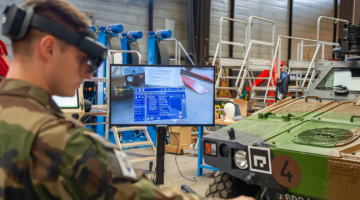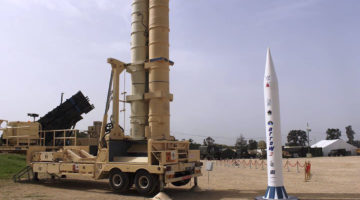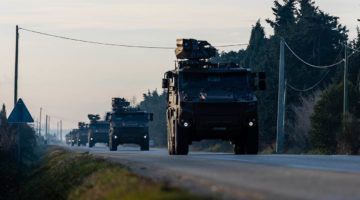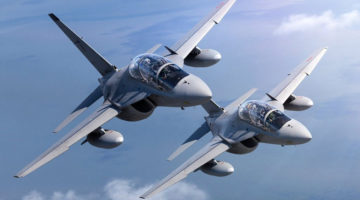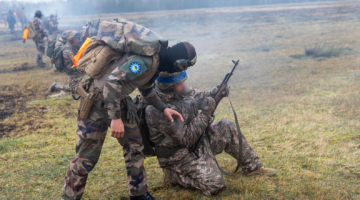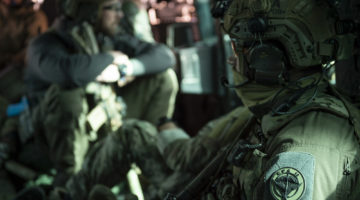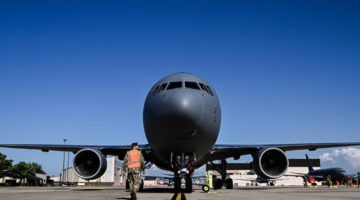(Air Force Magazine – John Tirpak ) – Bombers in 2050
With the Fiscal 2019 budget request, the Air Force is beginning an overhaul of its bomber fleet, starting with a plan to extend the B-52’s life span to nearly a century. If approved by Congress, the BUFF would remain operational until 2050, some 88 years after extant B-52Hs were delivered and 98 years after the YB-52’s first flight.
As stealthy new B-21 aircraft become available in the late 2020s and early 2030s, the Air Force would retire its B-1s and B-2s, much earlier than previously planned. They would be phased out because the Air Force believes it must live with a bomber enterprise manpower footprint not much larger than it is now. That means the new B-21 must replace—and not be additive to—much of the existing bomber fleet.
The Air Force had previously planned to operate the B-1 and B-52 until 2040 and the B-2 to 2058.
_______________________________________
Read this story in Air Force Magazine print issue:
The service is eyeing an enduring bomber fleet of roughly 175 aircraft overall, although service officials said that number could go up with more generous budgets.
In judging which older bombers to retain, USAF chose the B-52 over its younger stablemates because of the aircraft’s versatile conventional payload, comparatively lower maintenance needs, and the ability to carry the new Long-Range Standoff cruise missile, or LRSO.
The B-1, meanwhile, is labor-intensive and treaty-prohibited from carrying cruise missiles. The B-2 fleet, at only 20 aircraft, is considered too expensive per airplane to retain beyond the early 2030s.
The Fiscal 2019 budget includes the first monies necessary to begin equipping the B-52 fleet with new engines that would reduce its maintenance needs, extend its range and loiter time, and allow the aircraft to climb faster to cruising altitude. It would be retained into the 2050s. The Air Force is requesting $64.5 million in Fiscal 2019 to get the engine replacement effort rolling. (…)
[…]
New/Old Mix
After the B-1 and B-2 retirements, the Air Force would field a fleet of at least 100 B-21s and 75 B-52s.
The timing also suggests B-21 deliveries will average less than one a month during production. The Air Force has said it plans to have a “usable” asset when the first aircraft is delivered in the mid-2020s. Assuming that production of the new bomber continues until the last B-1B is retired, a production window of 2025-2036 is likely. Dividing 100 bombers over 11 years suggests a rate of about nine aircraft annually.
Former Air Force officials have hinted at such low numbers, explaining the service wasted a lot of money tooling up to produce B-2 bombers at a high rate but then built only 21 airplanes, instead of the planned 132. At less than one B-21 a month, large savings can be reaped in facilitization, manpower, and tooling—although there would likely be offset costs in learning curve and economic quantity materials purchases.
Under the Air Force’s proposal, the 1961/1962-vintage B-52s will receive a number of upgrades and improvements to keep them relevant in a world where they are too radar-reflective to get close to well-defended enemy airspace.
The B-52 extension depends in large part on a plan to re-engine the aircraft with modern power plants. With new engines, the B-52s would never have to stand down for engine overhauls, as the time “on wing” of the new power plants would exceed the planned remaining service for the old bombers. (…)

USAF’s bombers—a B-1, B-2, and B-52—fly near Barksdale AFB, La. Photo: Sagar Pathak/USAF Courtesy
Not Like The Old Days
Cost per flying hour was another factor weighing against the younger bombers in USAF’s thinking. Both the B-1 and B-52 averaged about $70,000 per flying hour (USAF did not call out specific numbers, and its charts were not fine-grained)—while the B-2 costs between $110,000 and $150,000 per flying hour to operate. Total ownership costs followed similar curves. (…)
READ FULL ARTICLE >>> www.airforcemag.com
Photo Credit: To make way for the B- 21—shown in an artist’s concept—USAF is looking to divest the B-1 and B-2 in the early 2030s © Air Force Magazine by Mike Tsukamoto and SrA. Christopher Bushibid

